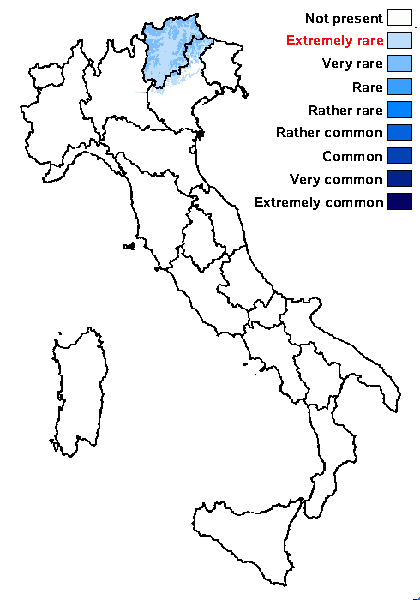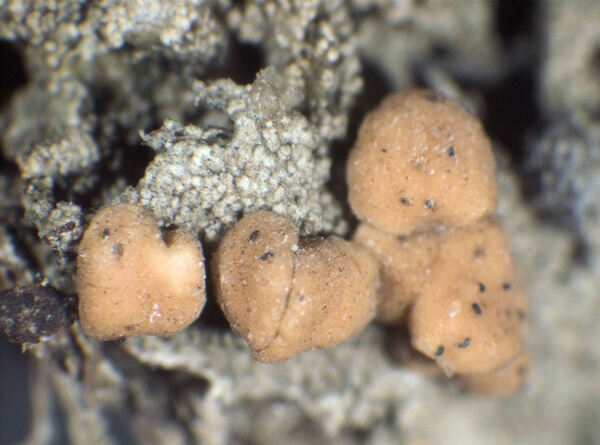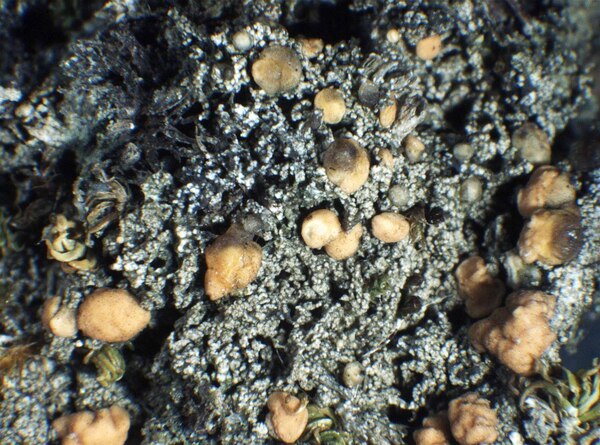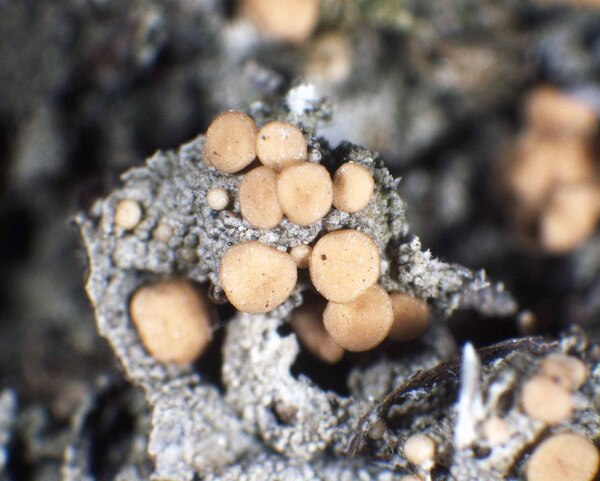Bacidina subfuscula (Nyl.) S. Ekman
Nordic J. Bot.: e03846, 39, 2023. Basionym: Lecidea subfuscula Nyl. - Flora, 48: 604, 1865.
Synonyms: Bacidia subfuscula (Nyl.) Th. Fr.; Lecania subfuscula (Nyl.) S. Ekman
Distribution: N - Ven (Nascimbene 2002, 2003b, Tomaselli & al. 2006, Nascimbene 2008), TAA (Herb. Nascimbene 7779).
Description: Thallus crustose, very variable, from immersed or filmy to (usually) granular-warted, greenish white to pale brown. Apothecia biatorine, crowded into clusters, 0.2-0.6 mm across, with an initially flat, but soon becoming convex, grey-brown pinkish brown to black disc, and a thin, usually paler proper margin. Proper exciple brown and K+ purple along the upper outer edge and at the top, otherwise colourless, of radially arranged, cellular hyphae; epithecium colourless to olivaceous grey or violet-brown, N+ red, K+ purple when strongly pigmented; hymenium colourless or with brownish vertical strikes in upper part, 40-50(-65) μm high; paraphyses rather lax, 1.5-2 µm thick, the apical cells swollen, up to 5 µm wide, usually brown-pigmented; hypothecium colourless or yellowish, the pigmented parts K+ pale yellow. Asci 8-spored, clavate to cylindrical-clavate, the apical dome K/I+ dark blue with a pale, conical-pointed apical cushion (axial mass) never penetrating through the entire d-layer, the wall K/I-, but the thin outer gel K/I+ blue, Bacidia-type. Ascospores 3(-5)-septate, hyaline, bacilliform, 14-28 x 2-3 µm. Pycnidia immersed, with a colourless wall. Conidia partly curved, 30-55 x 1-1.5 µm. Photobiont chlorococcoid. Spot tests: thallus K-, C-, KC-, P-, UV-. Chemistry: thallus without lichen substances.
Note: a bipolar species growing on more or less calciferous soil, terricolous mosses and plant debris, rarely on calciferous rocks, usually above the montane belt. The specimen from Veneto corresponds well to the description (vidi!).
Growth form: Crustose
Substrata: soil, terricolous mosses, and plant debris
Photobiont: green algae other than Trentepohlia
Reproductive strategy: mainly sexual
Commonnes-rarity: (info)
Alpine belt: very rare
Subalpine belt: very rare
Oromediterranean belt: absent
Montane belt: extremely rare
Submediterranean belt: extremely rare
Padanian area: absent
Humid submediterranean belt: absent
Humid mediterranean belt: absent
Dry mediterranean belt: absent

Predictive model
Herbarium samples
Growth form: Crustose
Substrata: soil, terricolous mosses, and plant debris
Photobiont: green algae other than Trentepohlia
Reproductive strategy: mainly sexual
Commonnes-rarity: (info)
Alpine belt: very rare
Subalpine belt: very rare
Oromediterranean belt: absent
Montane belt: extremely rare
Submediterranean belt: extremely rare
Padanian area: absent
Humid submediterranean belt: absent
Humid mediterranean belt: absent
Dry mediterranean belt: absent

Predictive model
| Herbarium samples |
 Index Fungorum
Index Fungorum
 GBIF
GBIF







